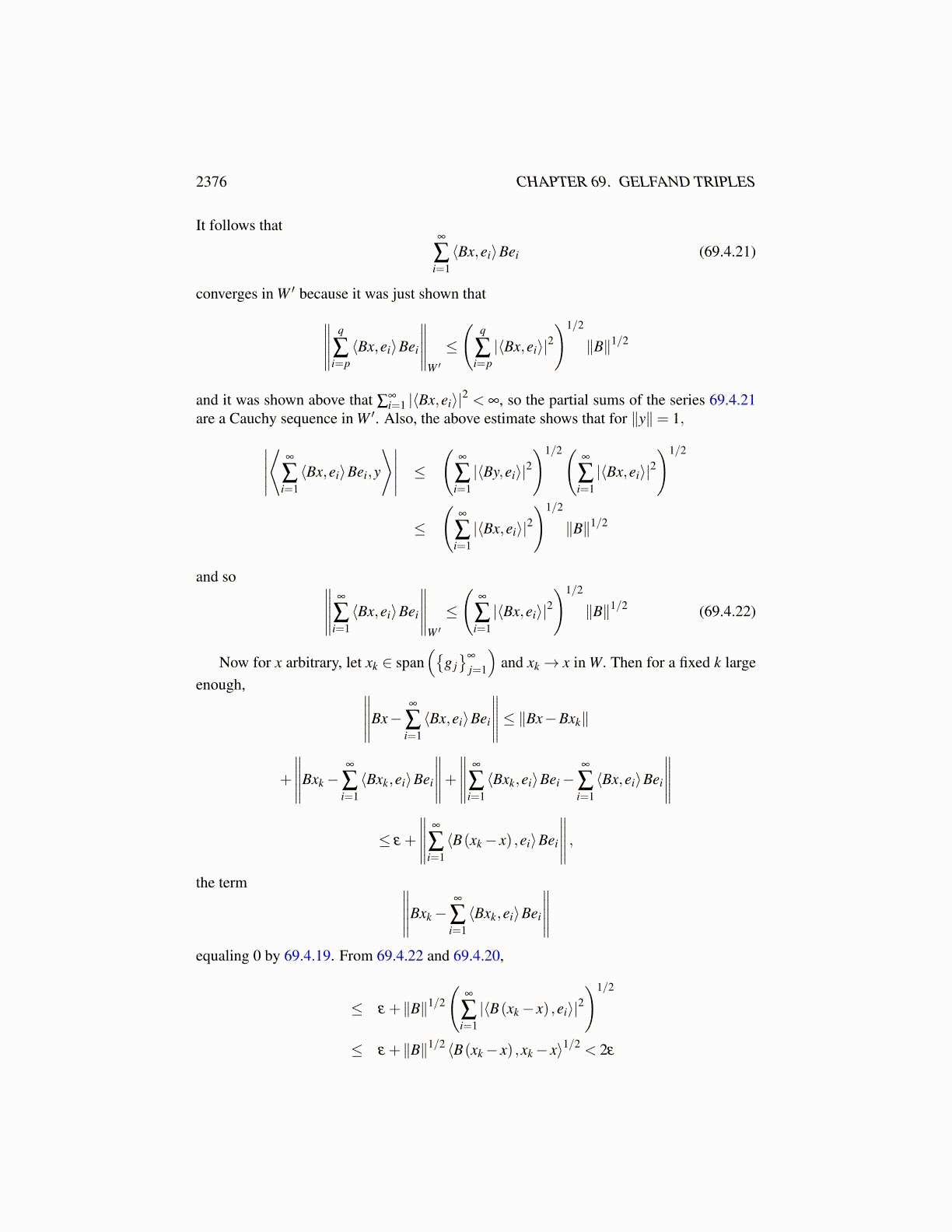
2376 CHAPTER 69. GELFAND TRIPLES
Now it follows from 69.4.17 that
Bxr =k
∑i=1
cri Bei +
r
∑i/∈{n1,··· ,nk}
dri Bgi
=k
∑i=1
cri Bei +
r
∑i/∈{n1,··· ,nk}
dri
k
∑j=1
cijBe j
and so Bxr ∈ B(span(ei, · · · ,ek)) . Then
Bx = limr→∞
Bxr = limr→∞
Byr
where yr ∈ span(ei, · · · ,ek). Say
Bxr =k
∑i=1
ari Bei
It follows easily that⟨Bxr,e j
⟩= ar
j. (Act on e j by both sides and use⟨Bei,e j
⟩= δ i j.)
Now since xr is bounded, it follows that these arj are also bounded. Hence, defining
yr ≡ ∑ki=1 ar
i ei, it follows that yr is bounded in span(ei, · · · ,ek) and so, there exists asubsequence, still denoted by r such that yr → y ∈ span(ei, · · · ,ek). Therefore, Bx =limr→∞ Byr = By. In other words, BW = B(span(ei, · · · ,ek)) as claimed. This proves theclaim.
If this happens, the process being described stops. You have found what is desiredwhich has only finitely many vectors involved.
As long as the process does not stop, let
ek+1 ≡gnk+1 −∑
ki=1⟨Bgnk+1 ,ei
⟩ei⟨
B(gnk+1 −∑
ki=1⟨Bgnk+1 ,ei
⟩ei),gnk+1 −∑
ki=1⟨Bgnk+1 ,ei
⟩ei⟩1/2
Thus, as in the usual argument for the Gram Schmidt process,⟨Bei,e j
⟩= δ i j for i, j≤ k+1.
This is already known for i, j≤ k. Letting l ≤ k, and using the orthogonality already shown,
⟨Bek+1,el⟩ = C
⟨B
(gnk+1 −
k
∑i=1
⟨Bgnk+1 ,ei
⟩ei
),el
⟩= C
(⟨Bgk+1,el⟩−
⟨Bgnk+1 ,el
⟩)= 0
Consider ⟨Bgp−B
(k
∑i=1
⟨Bgp,ei
⟩ei
),gp−
k
∑i=1
⟨Bgp,ei
⟩ei
⟩Either this equals 0 because p is never one of the nk or eventually it equals 0 for some kbecause gp = gnk for some nk and so, from the construction, gnk = gp ∈ span(e1, · · · ,ek)and therefore,
gp =k
∑j=1
a je j